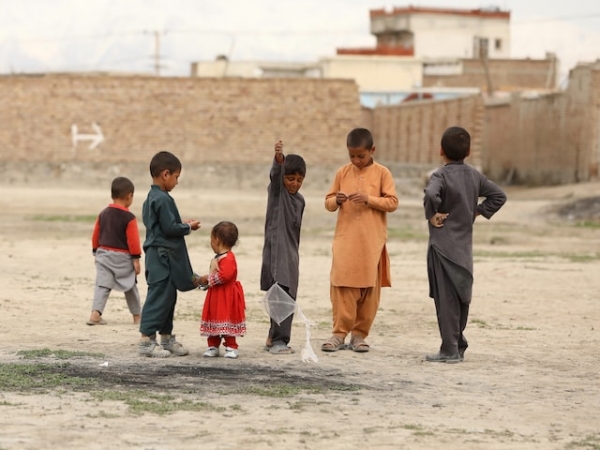Humanitarian Needs Overview is part of the Global Humanitarian Overview, a set of annual reports published by the United Nations Office for the Coordination of Humanitarian Affairs. The aim of the analysis is to collect data and information on populations’ humanitarian needs and emergencies around the world in order to develop and guarantee an adequate plan funding to the cause. The inter-sectoral approach of the report’s analysis identifies the multidimensional nature of people’s needs across sectors; thus, understanding the complex picture, the main objective of the report is to consolidate and organize a joint strategic response planning.
In order to comprehend the current humanitarian situation – and crisis – in Afghanistan, it is fundamental to take a step back and define the historical background of the country. In 1996, the country was chosen by Osama bin Laden and other members of Al-Qaeda for the establishment of terrorist training camps. Following the attacks of September 11, 2001, the US and the British forces bombed and moved into the country in an attempt to eliminate any Al-Qaeda terrorist cells. Thus, from October 2001 until May 2021, the country was occupied by US troops in a continuous warfare with the Taliban. After the declared US withdrawal in May 2021, the Taliban returned to power and retook Kabul in August of the same year.
The end of the 20-year armed conflict between the Taliban and the Afghan National Security and Defense Forces resulted in an unprecedented economic decline leading to poverty, hunger and risk of malnutrition. Furthermore, after the collapse of the Afghan government and the Taliban takeover in Kabul, previous international development assistance was suspended. The international humanitarian aid in the region accounted for 75% of public expenditure, mainly addressed to the public health system. Thus, the country's economic shock and the sudden suspension of the development aid have frozen the market and have put the humanitarian condition in danger in the entire territory .
Since the beginning of the conflict, the internally displaced population (IDPs) has risen to five million; according to the United Nations, this figure makes Afghanistan the third largest displaced country in the world. IDPs suffer very high food insecurities and the constant threat of forced evictions since they do not have other options than to occupy land with insecure property rights. According to the Report, unequal access to land is a major cause of gender inequality in the country. The unclear status of legislation protecting women’s access to land leaves them unprovided with one of the most valuable assets. Indeed, less than 5 per cent of land ownership documents are registered to a woman. After the Taliban takeover women’s rights have been significantly curtailed, their property rights have also been highly reduced.
After 20 years of armed conflict there is another alarming issue to take into serious consideration. Due to the long history of conflict, the ground presents dozens of unexploded mines, remnants of war and other devices which correspond to a high risk for the civilian population. These ordinances should have exploded during the conflict, their non-activation at the time leaves the devices still dangerous and ready to detonate; just one foot above them is sufficient to let them explode and cause either death or severe suffering.
According to the Landmine and Cluster Munitions Monitor 2023, Afghanistan is one of the most contaminated territories in the world. Despite the ongoing clearance work, the ground is still full of these weapons. According to the Report, there are 4295 hazardous areas in the country, affecting at least 1528 communities. The populations’ proximity to these hazards correspond to a constant threat, primarily for children. As highlighted in the Landmine Monitor’s Report, children of the civil population are the most exposed to the problem – indeed, most of the casualties regard them.
Together with the relevant human cost of these ordnance, their detonation leaves catastrophic environmental effects. Destroying the land leaves the country’s agriculture economy seriously disadvantaged and limited, worsening an already precarious situation. Furthermore, the country is entering its third consecutive year of drought and irregular rainfall patterns causing additional damage and disrupting agriculture. According to the Report, insecure agriculture’s production is a major driver of food, education, health insecurity and displacement.
In conclusion, the collapse of the Afghan Government and the consequent takeover of the Taliban have led the country in a serious economic crisis. The suspension of international assistance worsened the situation and left the country in an urgent humanitarian need. Thanks to the humanitarian situation monitoring conducted in the Report, it is possible to reconstruct and organize an efficient humanitarian assistance in the country, identifying service provision, sectoral needs, and vulnerabilities in Afghan communities. Given the rapidly evolving context, the Report aims to emphasize the urge for a strong international response on the issue.
Original report available here:
https://reliefweb.int/report/afghanistan/afghanistan-humanitarian-needs-overview-2023-january-2023
By Federica Tognolli







